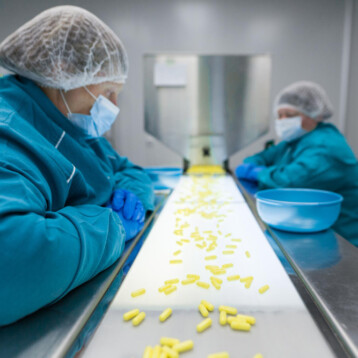Novartis, an international drug company, has recently developed a vaccine against the meningococcal B strain. This is the first vaccination to be developed for this often deadly disease that usually affects young children and infants. This new vaccine has the potential to save thousands of lives a year worldwide.
 |
Meningitis Defeated? (Credit: University of
Wisconsin Madison) |
|
The meningococcal B strain is the cause of 72% of meningitis cases in Europe, and is a major cause of the disease in other regions of the world. This is a violent, versatile strain of the disease, which most commonly attacks infants and children, and kills about half a million people around the world every year. Meningitis is an inflammation of the lining of the brain and spinal cord and is often associated with septicaemia, otherwise known as blood poisoning, which is also a very dangerous condition.The bacteria that can cause strain B meningitis are very common and are usually harmless. They are found naturally in the nose and throat and only cause meningitis or septicaemia in a small number of people.
The vaccine developed by Novartis has several antigens (molecules whose shape triggers the production of antibodies, thus triggering an immune response in an organism) that are found in most existing meningococcal B strains. Novartis scientists used a new approach, named “reverse vaccinology”, in developing the vaccine. First, they decoded the full genetic structure of the meningococcal B strain bacteria, discovering 600 new proteins. The vaccine was then produced by genetic engineering. The vaccine contains the antigens that showed the best ability to invoke an immune response to present meningitis B bacteria. The large amount of antigens on the vaccine increases the chance of a specific meningococcal bacterium being recognized by the body so the vaccine is likely to kill strains that contain the vaccine’s antigens.
The new vaccine was tested on 150 infants who received a course of three vaccinations, starting at two months of age. This produced a protective immune response which was then tested by a
biomarker of clinical protection (a marker the body produces once the vaccine has been imprinted into the immune system). One month after the third dose, almost 90% of the infants were producing a protective immune response, and after an added fourth dose an average 96% of them were producing an immune response. The side effects of the vaccination were minimal and included low fever and redness at the site of the injection, lasting less than 24 hours.
Similar positive results were obtained in other age groups and the vaccine entered Phase III clinical trials in the first quarter of 2008. If all goes well, it will advance to mass production shortly.
TFOT covered several vaccination related developments in the past, including an account of a bird flu vaccination developed by a European consortium research team, as well as a safe strain of ebola virus developed in the University of Wisconsin-Madison. We also covered a novel technology for developing more efficient vaccinations using nanoparticles, developed in EPFL (Ecole Polytechnique Fédérale de Lausunne) in Lausanne, Switzerland.
The press release from Novatis can be found here.











